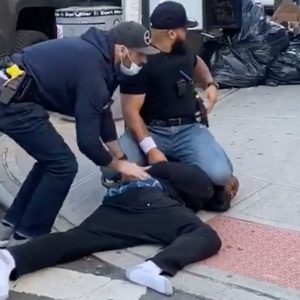The atrocities of WWII resulted in the establishment of international models of behavior that embedded basic human rights. The Charter of the United Nations and the Universal Declaration of Human Rights outlines some of these basic principles. Every country has to figure out the balance of giving police the ability to do their job of “protecting and serving” but also to hold them accountable when they fail. Different countries have performed in very different ways over the years. The U.S. used to be held up as a model – no more. “Deadly Discretion: The Failure of Police Use of Force Policies to Meet Fundamental International Human Rights Law and Standards” (2020). International Human Rights Clinic. University of Chicago Law School – International Human Rights Clinic, https://chicagounbound.uchicago.edu/ihrc/14
Creating Global Standards
To create global standards, the 193 countries in the UN developed principles and models to ensure the proper use of lethal force. Those principles are legality, necessity, proportionality, and accountability. These were then operationalized in resolutions, rules, and findings. Legislation is often the beginning of implementation of these principles. However, in 2015, Amnesty International, USA released “Deadly Force: Police Use of Lethal Force in the United States,” evaluating state laws’ compliance with international human rights standards. Alarmingly, the report found that not a single state’s law fully complied.
Deadly Discretion looks at only one aspect of the rules – police department written policies. They do not examine the enforcement or implementation. From 2017-2018, they reviewed the policies of the 20 largest cities in the U.S. These cities are (in order of population): New York, Los Angeles, Chicago, Houston, Phoenix, Philadelphia, San Antonio, San Diego, Dallas, San Jose, Austin, Jacksonville, San Francisco, Columbus, Indianapolis, Fort Worth, Charlotte, Seattle, Denver, and El Paso.
Deadly Discretion also found that the polices in all 20 cities failed to meet international standards. The rules grant police discretion where it shouldn’t; give no guidance on use of lethal force where it should; and establish insufficient accountability mechanisms. As the report says, “Ultimately, deep, structural reform of the United States’ law enforcement system is needed. The police in the United States kill more people than any of our peer nations.In a 24-day period in 2015, police in the United States shot more people than the police did in England and Wales in 24 years.”
For the report, the investigators created a grading system on the four principles. They looked at the U.N. Code of Conduct for Law Enforcement Officials; the U.N. Basic Principles on the Use of Force and Firearms by Law Enforcement Officials; and the 2014 report of the former U.N. Special Rapporteur on Extrajudicial, Summary or Arbitrary Executions, Christof Heyns, on protection of the right to life during law enforcement encounters. The scale does not measure implementation or enforcement, just the existence of the policy in statute or police guidelines.
For the principle of legality, actual laws must be in place that meet the international standards. Since much of the illegality that was documented occurred at lawful demonstrations, government should re-evaluate having armed police present during lawful public gatherings at all. Alternatives have proven to be more effective. For the necessity principle, Congress must revise 42 U.S.C. §1983 to change the “reasonableness” standard of response to “last resort when absolutely necessary to prevent death or serious bodily harm.” Legislatures should mandate de-escalation, eliminate no-knock warrants, require that officers intervene when other officers use excessive force, eliminate any exceptions for escaping suspects or fleeing felons and any blanket self-defense or prevention of crime language.
For the proportionality prong, Congress should condition funding on meeting these standards that would require the elimination of chokeholds, carotid holds, neck restraints, tear gas, and rubber bullets. All actions must be proportional without exception or equivocation. For the accountability prong, all departments must collect data and make it public including on use of lethal force. The “qualified immunity” provision must be eliminated. Congress must revise 18 U.S.C. §242 to lower the standard of criminal intent required to convict law enforcement officers from “willfully” to “knowingly or with reckless disregard.” Body and dash board cameras should be required. Every department must have an external, independent civil oversight body fully empowered.
The U.N. Code of Conduct requires that force can only be used when strictly necessary and firearms used only as a last resort and then only when the suspect offers armed resistance or endangers others and less extreme means cannot be used. That is certainly not the practice we have seen over and over again in citizen, media or department videos.
Domestic law must reflect these four standards for the principle of legality to be met. For necessity to be met, the threat must be imminent – “a matter of seconds, not hours.” Again, that is certainly not the reality we have seen in the public videos. Graduated force should be used – again, not in the U.S. where the first shot is a bullet. Proportionality requires that the harm to life be balanced against the harm to property – life must win. An effective review process is necessary for accountability.
How Did Phoenix Police Do?
Of the 20 cities reviewed, Phoenix came in twelfth with a score of 60. Scores ranged from ten in Indianapolis to 85 in Chicago and Los Angeles, the highest. Phoenix tied with Austin, TX; Jacksonville, FL; and Charlotte, NC – interesting that they are all southern cities.
The highest legality score was twenty and most cities had about seven including Phoenix. Our state law A.R.S. §13-410 is not compliant with international standards. The highest necessity score was thirty and Phoenix got twenty. That score consisted of three parts: immediacy for 10 points (threat must be immediate or imminent); particularized threat for 10 points; and last resort for 10 points (non-lethal options had to be considered). If the policy had a fleeing felon exception, a city could only get 5 points. Phoenix was second to last overall in necessity and received a zero for immediacy. In other words, our policy violates not only international law but domestic law under Graham v. Connor. Phoenix did get 10 points each for the other two factors of particularized threat and last resort.
Phoenix got the full score on the principle of proportionality at 25 points. However, we did poorly on the accountability principle obtaining only 10 points of the available 25. That score had five parts: Mandatory internal reporting for all instances of use of lethal force; Mandatory external contact only when death or injury results from use of lethal force; Mandatory external contact for all instances of use of lethal force; Mandatory external reporting only when death or injury results from use of lethal force; and Mandatory external reporting for all instances of use of lethal force.
The Phoenix community has tried for 40 years to get an external review board and most recently succeeded with funding being awarded just days ago. This is a positive step forward. Under the then existing system, Phoenix scored 5 for the internal reporting and 5 for the mandatory external contact if the action resulted in death or injury.
Arizona State Law
The report then outlined the statutes and policies of each city. For the lethality principle, they cited Arizona A.R.S. §13-410 that reads as follows:
13-410. Justification; use of deadly physical force in law enforcement
- The threatened use of deadly physical force by a person against another is justified pursuant to section 13-409 only if a reasonable person effecting the arrest or preventing the escape would believe the suspect or escapee is:
- Actually resisting the discharge of a legal duty with deadly physical force or with the apparent capacity to use deadly physical force; or
- A felon who has escaped from lawful confinement; or
- A felon who is fleeing from justice or resisting arrest with physical force.
- The use of deadly physical force by a person other than a peace officer against another is justified pursuant to section 13-409 only if a reasonable person effecting the arrest or preventing the escape would believe the suspect or escapee is actually resisting the discharge of a legal duty with physical force or with the apparent capacity to use deadly physical force.
- The use of deadly force by a peace officer against another is justified pursuant to section 13-409 only when the peace officer reasonably believes that it is necessary:
- To defend himself or a third person from what the peace officer reasonably believes to be the use or imminent use of deadly physical force.
- To effect an arrest or prevent the escape from custody of a person whom the peace officer reasonably believes:
(a) Has committed, attempted to commit, is committing or is attempting to commit a felony involving the use or a threatened use of a deadly weapon.
(b) Is attempting to escape by use of a deadly weapon.
(c) Through past or present conduct of the person which is known by the peace officer that the person is likely to endanger human life or inflict serious bodily injury to another unless apprehended without delay.
(d) Is necessary to lawfully suppress a riot if the person or another person participating in the riot is armed with a deadly weapon.
- Notwithstanding any other provisions of this chapter, a peace officer is justified in threatening to use deadly physical force when and to the extent a reasonable officer believes it necessary to protect himself against another’s potential use of physical force or deadly physical force.
It’s obvious the statute does not meet international requirements. The statute allows threat of or use of deadly force against a person for an escape or attempted escape. Escape does not carry a death penalty. A mentally ill person running away, a deaf person not hearing an order, or a person trying to escape from a conviction of a minor charge should not be assassinated.
Section (A)(1) does not even require that the person use or have the ability to use deadly force but only have the capacity to use deadly force. That applies to every one of us. I have the capacity to use deadly force – I could stab a person, I could shoot them if I had a gun, I could run them over with my car. Section (A)(2) and (3) applies to an escaped felon – it does not require that the felon have or be using deadly force so there is nothing imminent about it.
Arizona only has one crime that is punishable by death and that is first degree murder (A.R.S. §13-751). Even negligent homicide is a class 4 felony (A.R.S. §13-1102), manslaughter is a class 2 (A.R.S. §13-1303), and even second-degree murder is a sentence of 10-25 years not death (A.R.S. §13-710).
On the other hand, Arizona has a tremendous number of crimes that could make someone a felon. Throwing urine at someone is a class 6 felony (A.R.S. §13-1212); if your dog bites someone that is a class 3 felony (A.R.S. §13-1208); adultery is a class 3 (A.R.S. §13-1408) (our prisons would really be packed if all those people were arrested); possession of burglary tools without having done a thing is a class 6 felony (A.R.S. §13-1505); criminal littering or polluting could be a class 6 felony if it’s a large amount (A.R.S. §13-1603) (many companies could be nailed on that); if you are a passenger in a stolen vehicle (which I was when in college) that is a class 6 felony (A.R.S. §13-1803). If you lie in your bankruptcy filing (and who doesn’t) that could be a class 6 felony (A.R.S. §13-2206).
To offer to exert influence on a public officer or employee is a class 4 felony (A.R.S. §13-2606) so it seems that we should shoot every lobbyist running into the legislature? If a person tries to influence a witness on how to testify in a case, that is a class 5 felony (A.R.S. §13-2802). Nearly every abuser I ever worked against tries to and most do influence their victim not to testify or to testify falsely to avoid responsibility. Though I worked on domestic violence for 40 years, I have never seen one abuser charged with this.
Grocery store magazine stockers need to be shot too because public display of explicit sexual material (like the front of nearly every major magazine and tabloid) is a class 6 felony. (A.R.S. §13-3507) Many people understand the idiocy of our marijuana laws in A.R.S. §13-3405 in which possession of marijuana varies from a class 2 to a class 4 felony depending on whether you have fewer than two pounds or more than four. But the police could shoot you dead for this if you run away. Yet 33 states, including Arizona, allow medicinal use of marijuana and eleven states allow marijuana for recreational use as well.
Section B of the Arizona statute is completely illegal by giving the right to use deadly force to a private person. Section C (1) allows deadly force for “use or imminent use.” International law requires that deadly force only be used for imminent threat. Again (C )(2) allows assassination to prevent escape even if the person may be arrested in convicted for a non-violent crime or a crime that does not have death as a potential penalty.
The crime of escape itself (A.R.S. §13-2504) says that using or threatening physical force or a deadly weapon is a class 4 felony. So if the punishment for doing it is a class 4 felony and does not include the death penalty, why can police administer the death penalty for someone potentially violating that section of the law? Police are not the judge and jury yet they are delivering the ultimate penalty that is not authorized by law.
Even worse in (C ) (2) subsection (a) it allows use of deadly force for committing or “attempting” to commit a felony. So the person can have done nothing yet be shot – something we have indeed seen. The statute also says that the person is doing with a weapon. But as we have seen, police often claim they saw a weapon when it was a wallet or a phone or nothing at all.
The actual crime of attempt is one level lower than the crime that was allegedly attempted (A.R.S. §13-1001). Since the only crime that has death as a penalty is first degree murder, no “attempt” authorizes a death penalty.
A true horror is section (C ) (2) (c) where an officer can claim that s/he knows from past or present conduct of that person that they are likely to endanger someone. This is racial profiling written into statute. Any officer can claim to have information on that person from past encounters or station rumors or racial profiling. This is indeed Matrix come to fruition. Police just decide based on their own prejudice and stereotypes that a particular person, one they view as a gangbanger, a thug, a drug dealer is likely to endanger someone so they can shoot him. No imminence or threat or crime is required at all.
In (C ) (2) subsection (d) an officer can use deadly force to suppress a riot if they believe the person is armed. Two problems are evident. Police often mistake a First Amendment legal protest for a riot. Second, police are often the ones doing the rioting. Third, police have stereotypes about who might be carrying a weapon. The person doesn’t even have to have done a thing – no threat, no use – simply “participation” which the cops define as legal observing, journalism, or people watching from their own porch. This legislation basically authorizes a police free-for-all in gross violation of international law.
Riot is defined in A.R.S. §13-2903 as using or threatening to use force and actually disturbing the public peace. It is a class 5 felony – the second lowest. Yet police are authorized to kill those who they claim are “participating” i.e. the police can assassinate a person, deliver the ultimate penalty for a class 1 felony murder, for participating in a First Amendment action. Like escape, the actual crime is a low-level felony but the police are authorized to murder a person for it. This violates the Constitution as well as international law.
Lastly in Section D, deadly force can be used by a reasonable officer if the potential use of physical force or deadly physical force exists. But the use of physical force is not proportional for a response of deadly force. Responding to a thrown water bottle or even a punch in the face, should a person get that close to an officer which is highly unlikely, does not justify shooting a person. The response has to be proportional. When battered women are beaten to within an inch of their lives, if they fire a gun even in the ceiling and hurt no one, they go to prison. But police can use deadly force in response to only potential use of physical force. Such lack of proportionality is in gross violation of international standards. The state legislature has a lot of work to do to fix this travesty. It is just one step in stopping the blatant murder of citizens on the streets of our cities.
Phoenix Police Policies
City use of force policy as outlined in the written policies is:
O.O. 1.5(4)(H)
“When such force is reasonable to protect themselves or a third person from another’s use, or threatened use, of deadly force.
To prevent the escape of a subject whom the employees has probable cause to believe has committed an offense involving the infliction or threat of serious physical injury or death, and is likely to endanger human life or cause serious injury to another unless apprehended without delay.
In situations where the officer must overcome an attack the officer reasonably believes would produce serious physical injury or death to the officer or another person.
When the use of techniques taught by the Department’s proficiency skills instructors is not practical under the circumstances, the officer may resort to any reasonable method to overcome the attack.”
At least the escape language here requires that the offense be for infliction or threat of serious physical injury or death or likely to endanger life or injury. It also requires that there must be an “attack” on an officer rather than just potential use of physical force and the officer must use methods short of lethal before resorting the ultimate force.
The city policy on necessity is as follows:
O.O. 1.5(4)(H)
“Guidelines – Officers may use deadly force under the following circumstances:
- When such force is reasonable to protect themselves or a third person from another’s use, or threatened use, of deadly force.
-
To prevent the escape of a subject whom the employees have probable cause to believe has committed an offense involving the infliction or threat of serious physical injury or death, and is likely to endanger human life or cause serious injury to another unless apprehended without delay.
-
In situations where the officer must overcome an attack the officer reasonably believes would produce serious physical injury or death to the officer or another person.”
“Deadly force is utilized as a last resort when other measures are not practical under the existing circumstances.”
“When the shooting of a subject appears imminent employees will, if practical, issue a verbal warning.”
This policy as in the statute allows deadly force for any threat rather than an imminent threat. It also requires probable cause regarding an escape rather than the lower standard of reasonableness though that low standard remains for the other situations. It does mention last resort and giving a verbal warning.
The city policy on proportionality is as follows:
O.O. 1.5(4)(H)
“Employees may use deadly force under the following circumstances: In situations where the employee must overcome an attack the officer reasonably believes would produce serious physical injury or death to the employee or another person.”
The city policy on accountability at the time of the review was as follows:
O.O. 1.5(4)(H)
“Notifications: Employees who discharge any firearm will make a verbal report to a supervisor as soon as possible and submit a written report as soon as practical … The employee’s bureau/precinct commander or the duty commander will be advised of the weapons discharge incident.”
O.O. 1.5(6)
- Use of Force Report
“(2) Supervisors will initiate the Use of Force Report within 7 days of notification of the incident.
(3) Use of Force reports will be submitted up to commander approval within 30 days of initiation of the report.”
O.O. 1.5(7)
SHOOTINGS AND OTHER CRITICAL USE OF FORCE INCIDENTS
“A. Required Reports – Supervisors will complete the following reports: Shooting Investigation (if applicable; see section 7.E of this order)
Use of Force Report
B. Investigation and Reporting Responsibilities:
Shooting and Use of Force Incidents Resulting in Death or Serious injury: All shootings and use of force incidents resulting in death or serious injury involving employees of this Department will be investigated concurrently by the following:
- – Professional Standards Bureau (PSB)
- – Completes the Use of Force Report
- – Involved employee’s supervisor
- – Violent Crimes Bureau (VCB) / Homicide Unit
- – Incident Review Unit (IRU)”
O.O. 3.1 SERIOUS INCIDENT POLICY:
“2. Definitions: A. Serious Incident- Involves death, serious injury (hospitalization), officer-involved shootings, prolonged or violent tactical operations, major disaster scenes. Etc.
This accountability policy will have to be changed now with the recently passed citizens review board. But it’s clear from the policy violations above, that the city council also has a lot of work to make the policies of Phoenix police compliant with international policing standards.
Conclusion
Since I moved to Phoenix in 1980, I have worked for reform of the Phoenix police and creation of a citizens’ review board. Forty years later, Phoenix remains woefully in violation of international standards and clearly out of touch with the citizens. The legislature has work to do; the city council has work to do but neither of them will do it without citizen outcry. Local police are about as close as government gets to you. If we cannot control that, if our voices mean nothing at this level, then democracy is lost. Insist your legislators revise Arizona state law to make it compliant with international standards. Insist your city council in every town in Arizona revise their police policies in line with international standards.
The Phoenix city council is voting on the city budget on June 17. They want to give police a 25% increase while cutting other vital services that actually do “serve and protect” people. If you live in Phoenix, please contact Mayor Gallego and your city council person and tell them you do not want the police budget increased. Funding should be put into people’s needs.
Discover more from Blog for Arizona
Subscribe to get the latest posts sent to your email.




